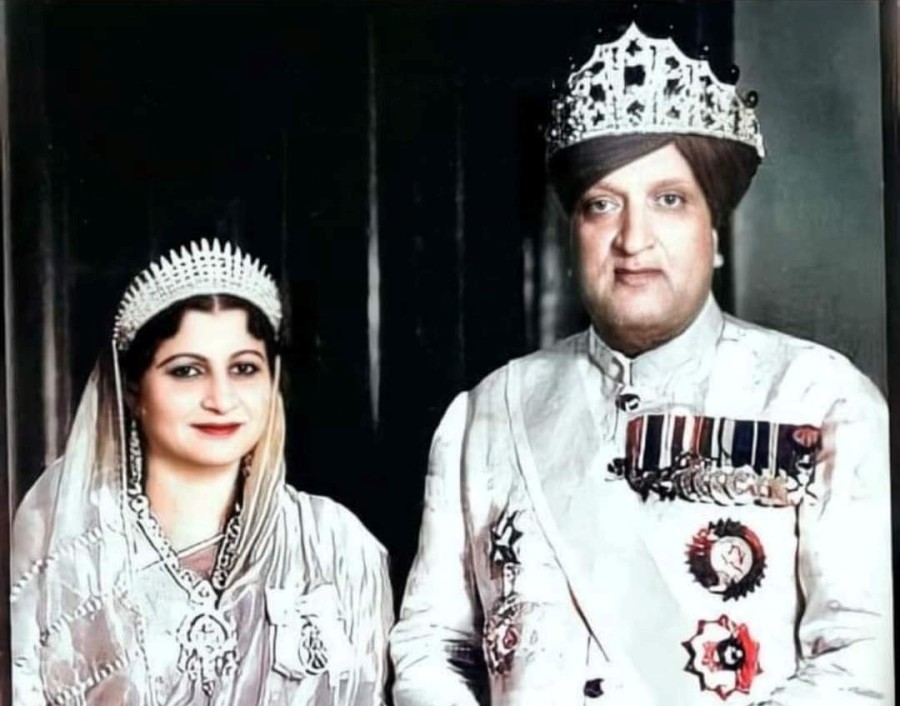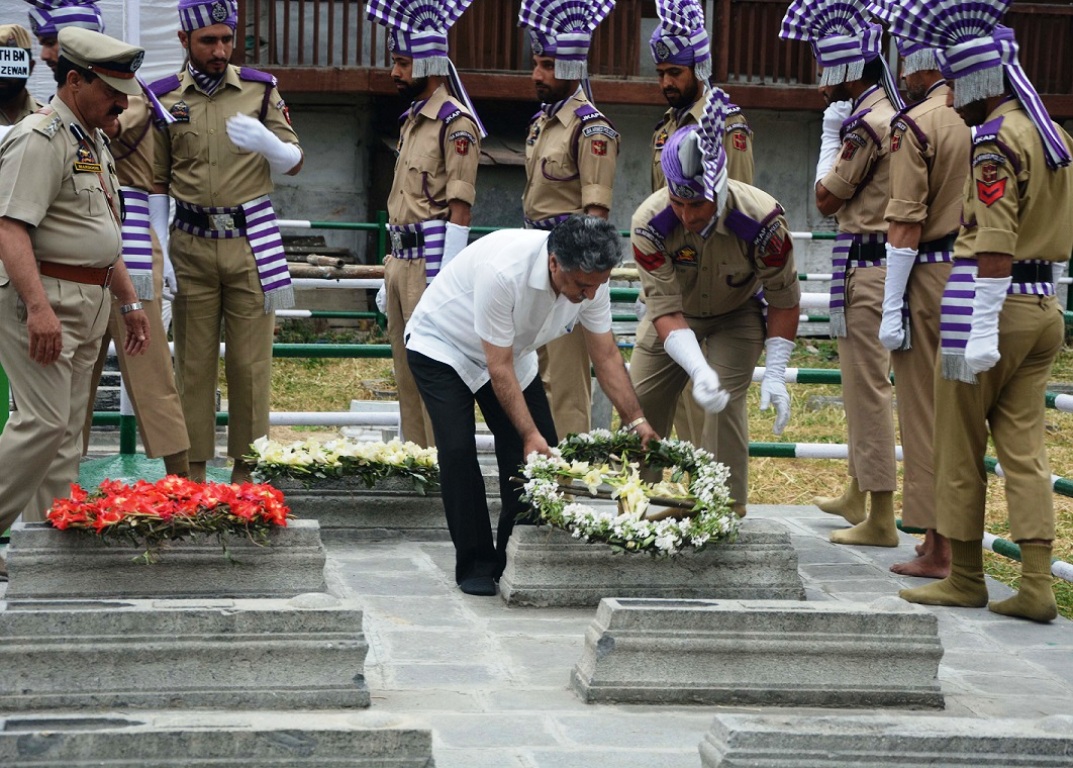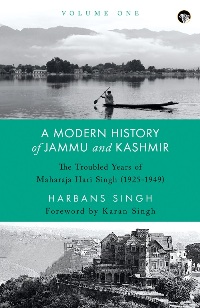After going through the first of the three-volume book on the era presided over by Maharaja Hari Singh, Muhammad Nadeem believes the narrative is aimed at generating defence to a well-established history of Jammu and Kashmir

Harbans Singh’s A Modern History of Jammu and Kashmir, Volume One: The Troubled Years of Maharaja Hari Singh (1925-1949) aims to rewrite the prevailing negative portrayal of Kashmir’s last Dogra ruler. However, in seeking to rehabilitate the image of Maharaja Hari Singh, the author reveals more about his own biases than shedding new light on history.
In defending Maharaja, the more than 400-page book attacks his critics like Sheikh Abdullah. But ultimately, it fails as an objective historical account, instead promoting a selective narrative that obscures inconvenient truths.
The book opens by touting Maharaja’s early progressive reforms, such as promoting widow remarriage and throwing open temples for lower castes. However, these token measures hardly dismantled the feudal structure of the Dogra rule. Peasant exploitation continued unabated, as the regime served the interests of a small elite of upper-caste families. Yet the book ignores the discontent brewing among the Maharaja’s subjects, instead blaming foreign forces like the British and the Congress for turning popular opinion against him post-1931.
The 1931 Unrest
This pattern continues across the text – glossing over oppression under Hari Singh while shifting blame to external enemies. So, on the 1931 anti-Hindu riots in Jammu, the book admits killings occurred but denies any state complicity. The book ignores alternative historical evidence to completely exonerate the autocrat.
The book offers similar distortions regarding accession. Wartime correspondence shows both India and Pakistan urgently entreating the indecisive Maharaja to accede even as tribal invaders approached Srinagar in 1947. However, the author blames Congress leaders like Nehru and regional rival Sheikh Abdullah for supposedly obstructing Hari Singh’s decision to join India. In reality, the Dogra ruler deliberately delayed accession as a bargaining tactic to secure his position, at tremendous human cost to Kashmiris facing the raiders’ assault.

These deceptions persist throughout, whether inflating the Maharaja’s contributions or diminishing his detractors. For instance, the book exaggerates the role of the Dogra troops who helped thwart the 1947 invasion, while downplaying ordinary Kashmiris who took up arms. This reflects the narrative of Dogras as the heroic “martial race” juxtaposed against ungrateful Kashmiris led by rival Sheikh Abdullah.
Fundamentally, the book is not history but hagiography. Any scholar of integrity must approach this text cautiously rather than accepting its claims uncritically. That said, even partisan accounts can provide value in challenging dominant paradigms and highlighting underappreciated perspectives. Perhaps subsequent volumes will show more self-awareness of inevitable biases in chronicling the recent past.
Progressive Reform
While the author upholds Hari Singh as a champion of reform and progressive values, the reality is much more complex. Undoubtedly, the Maharaja’s measures like expanding education and legally empowering marginalised groups were unprecedented and laudable. However, they hardly dismantled the prevailing feudal structure privileging elite upper-caste families of Kashmir.
For instance, the book touts Maharaja Hari Singh throwing open temples for lower castes as proof of his modernising vision. Yet the same regime legally mandated putting rooster feathers in lower caste headgear for purposes of enforcing hierarchy and untouchability. This was anything but progressive. Likewise, while expanding schools, the state still invested minuscule amounts in primary education compared to royal expenses on the military, palaces, and religious grants favouring upper castes.
Ultimately the book presents high-minded decrees without examining ground realities for Kashmir’s subjects, especially peasants who faced crushing taxation under Dogra jagirdars. It admits no discontent or grounds for opposing such a ‘benevolent’ despot.
Contested Narratives on Accession
The book seeks to settle the debate on Hari Singh’s indecisiveness regarding accession by pinning blame on Congress leaders for delaying the decision. However, a detached view must recognise multiple clashing priorities that fatefully converged in 1947 with deadly consequences.

For Pakistan, exploiting turbulence in Kashmir following the lapse of British paramountcy presented an opportunity to forcibly annex this Muslim-majority province. For Congress leaders like Nehru, integrating the iconic valley into the Indian Union was essential for proving secular nationalism’s viability.
As for the Maharaja himself, he endeavoured to preserve Dogra sovereignty by securing military aid before accession rather than any deeper alignment per se. His primary goal was self-preservation, not Kashmir’s best interests or contemplating its populace’s sentiments.
Thus, in fixating on vindicating Hari Singh, the book denies agency to ordinary Kashmiris caught in the ambitions of competing powers as British rule dissolved. Their voices are largely missing in the voluminous correspondence around accession between Indian and Pakistani leaders.
Ultimately no single truth can capture the chaotic forces unleashed by the partition that violently ruptured Punjab and Jammu and Kashmir. While many questions would require answers, the fundamental cynicism underlying Hari Singh’s considerations is undeniable despite this book’s ardent defence. His regime’s disastrous unpreparedness and dithering early on as raiders approached the valley itself invited the subsequent chains of misfortunes ravaging Kashmir for decades.
The post In Maharaja’s Defence appeared first on Kashmir Life.
from Kashmir Life https://ift.tt/ZAyU3pO
via IFTTThttps://ift.tt/O0QsK6I
No comments:
Post a Comment